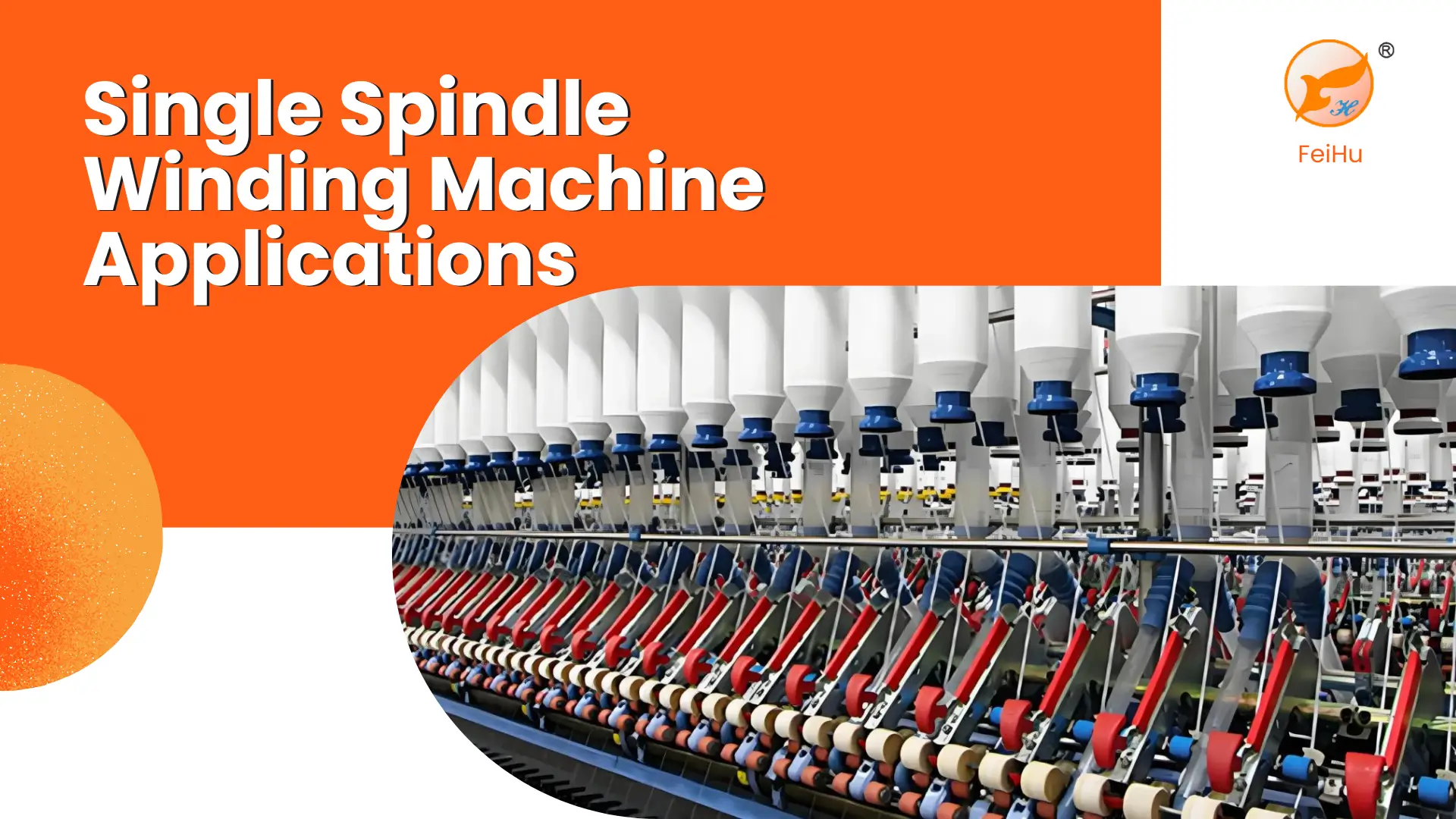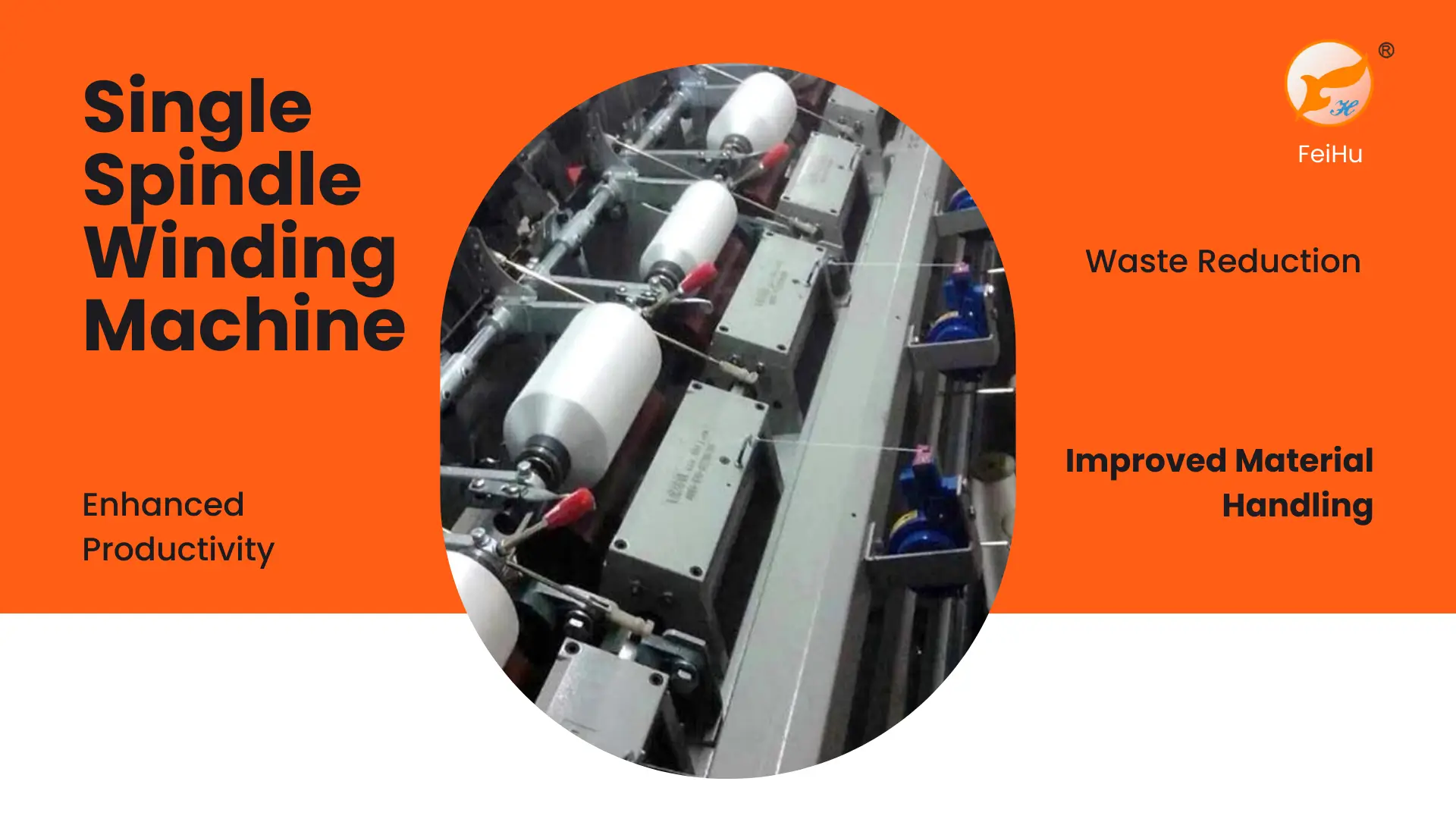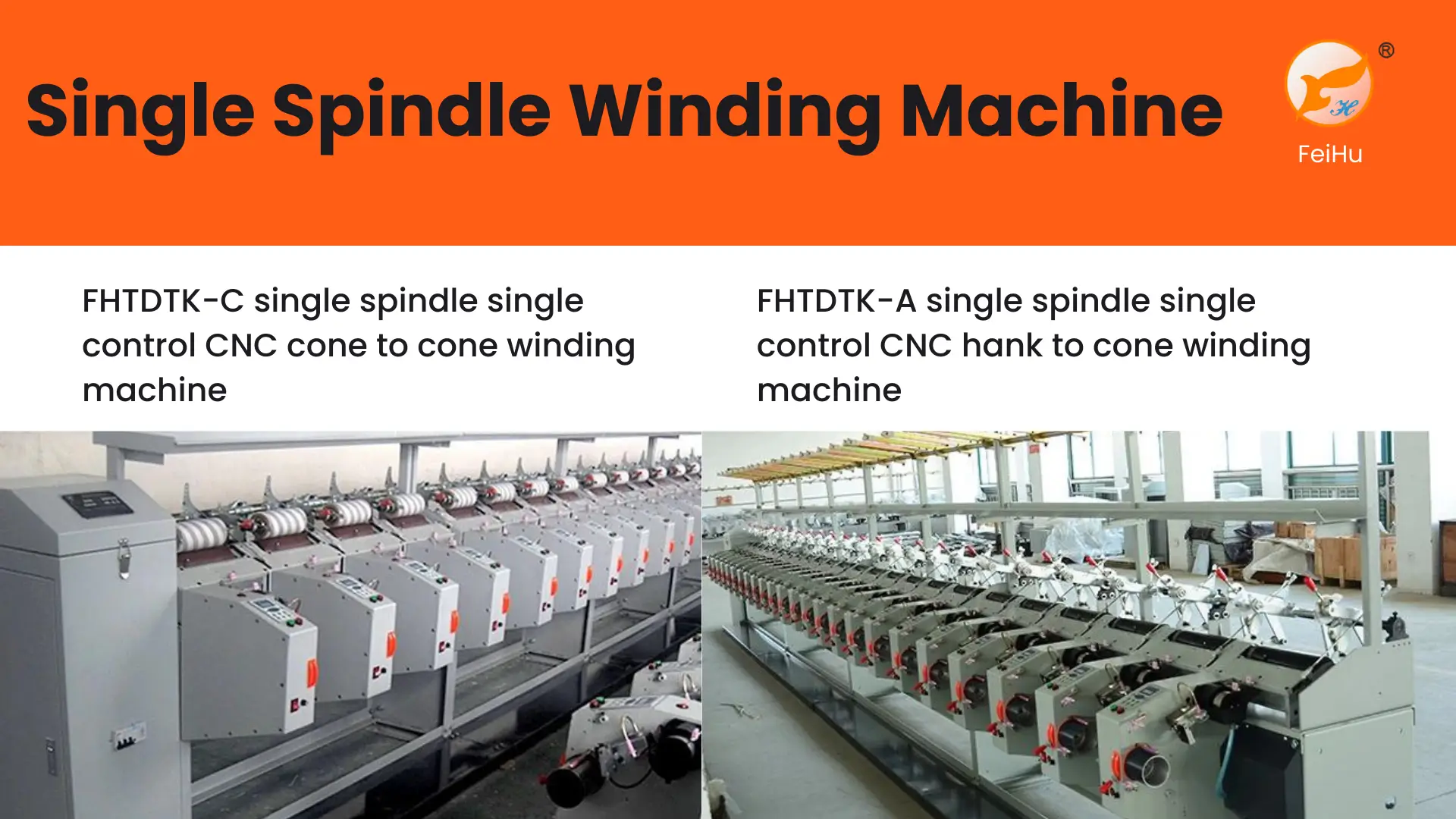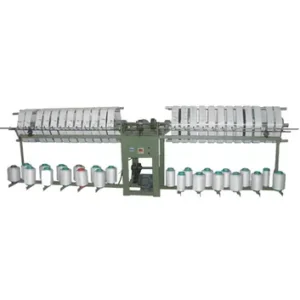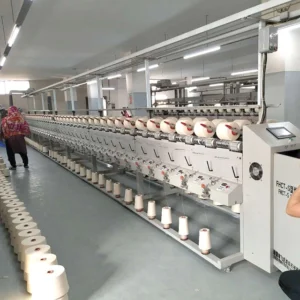Single spindle winder is immense in the manufacturing sector, to be very honest.
These are fabricated machines to wind materials, such as wires, cables, and threads onto spools or bobbins at a high level of precision and efficiency.
Single spindle winding machines play a vital role in manufacturing.
They bring along a raft of benefits that will go in a long way to enhance the workflow in production and the quality of the end products, hence becoming an asset to any kind of manufacturing company.
A Guide to Working with Single Spindle Winding Machine in Manufacturing
The Basic Feature Consisted of Any Single Spindle Winding Machine
A single-spindle winding machine needs fine and much delicate efficiency to wind items into spools or bobbins.
These machines are single spindle and rotate at high speed, which enables the controlled and consistent wind for various materials such as Nylon 66, textiles, wires, and cables.
Spindle speeds, tension control, and winding patterns are adjusted based on specific manufacturing process needs for excellent performance levels and yields.
Single Spindle Winding Machine: Enhanced Manufacturing Process Worksteps
A design of the machine will assure that most of the work in the winding is done with a minimum of human intervention to reduce inconsistency and defects in the process.
The single spindle winding machine brings about improved throughput, better material usage and improved quality of the final product for the manufacturer because of this with proper planning and integration with other manufacturing equipment.
Maintenance and Servicing of Single-Spindle Winding Machines
Regular inspections, clean up, and adjusting are necessary to keep the machines in peak operating condition.
It is also upon the manufacturers to take proactive steps for any issues or wear and tear and keep themselves updated with best maintenance practices and any latest developments in technology.
Finally, by investing appropriate resources towards the maintenance and care of the single spindle winding machines, the manufacturers can maximize return on investment and remain competitive in the market.
7 Amazing Applications of Single Spindle Winding Machine You Should Know
Production of Industrial Textiles
Single spindle winding machines find great use in the setup of producing industrial textiles that find application in automotive, aerospace, construction, and other industries.
The machines can execute precise winding of bobbins or spools of high-strength fibers—including Nylon 66—that are further used in the production of reinforced fabrics, ropes, and a range of other specialized textile products.
Wire and Cable Winding
Single spindle winding machines are widely used for the winding of electrical wires and cables.
Sorted out the winding of almost any wire or cable size at constant tension and will be wound into exact winding patterns that are very important in the manufacturing of quality electrical components and assemblies.
Composite Materials Fabrication
Single-spindle winders in the manufacturing of composite materials for winding reinforcement fibers, like carbon and glass, onto molds or mandrels play an important role in the production process for making strong, lightweight composite parts used by the aerospace, automotive, and industrial sectors.
Manufacturing of Medical Devices
Single spindle winding machines make a variety of medical equipment, from catheters, surgical sutures, and special bandages, to the most sensitive medical devices.
As a result of precision winding, this always guarantees equal quality and function of sensitive medical instrumentation.
Optical Fiber Spooling
Such kind of single-spindle winders winds optical fibers on spools or bobbins for keeping them.
Such machines treat fragile fibers very tenderly, keeping them undamaged, thus being able to produce high-quality optical communication and sensing components.
Jewelry and Craft Production
While primarily applied in industrial manufacturing, the single spindle winders can also be applied to the more creative fields of creating special jewelry, arts and crafts, and even model prototyping for new product designs.
Specialty Mechanical Component Winding
Hence, single spindle winding machines can also find use in the production of many other mechanical parts, such as springs, coils, or other highly precise parts.
Controlled winding gives consistent quality and performance in these crucial parts.
Benefits of Single Spindle Winding Machine in Modern Manufacturing
Enhanced Productivity
Single-spindle winders will give the productivity need in winding by maximizing on man-hours spent in any production run.
Operating at high speeds with several automated features allows for greater throughput per manufacturer, thus creating an avenue to meet increased demand or stay competitive in the market.
Waste Reduction
These machines are designed to wind at a high degree of accuracy, reducing possibilities of defects or material waste.
Through the precision in the control of tension while winding, winding speed, and pattern, single spindle winding machines can enhance the capability of the manufacturer in optimizing material usage and lowering the overall production cost.
Improved Material Handling
All these single spindle winders also include various simplifications in material handling, such as automation of spool or bobbin loading and unloading.
Reduction of manual interference decreases the risk linked with human error and, as a result, makes the manufacturing atmosphere much more effective and safe.
Better Precision
The main function of a single spindle winding machine is to wind material onto spools or bobbins with unsurpassed accuracy.
Such high accuracy is very crucial when quality products are being made, particularly for those industries dealing in very tight tolerances in manufacturing, such as in electronics, medical equipment, and in specialized industrial applications.
Read More:
- Factors Affecting Single Spindle Winding Machine Price
- Single Spindle Winding Machine Advantages and Benefits
How to Choose the Right Single Spindle Winding Machine for Your Project
Analyze the Material and Winding Application Required
Parameters to consider may include the diameter, thickness, and tensile strength of the materials as well as the desired winding patterns, speeds, and tension.
Such information helps to derive the right machine specifications for parameters such as spindle speed, winding capacity, and tension control.
Evaluate Your Production Demand and Flow
Factors such as automation requirement, production volume, and integration with other manufacturing equipment, among others, may put an influence on the selection of the single spindle winding machine.
Evaluate your present and future production needs towards ensuring the type of chosen machine into fitting perfectly into your manufacturing process.
Compare Machine Features and Capabilities
With a clear understanding, you can set out to do the research and comparisons that will lead you to a better decision about which single spindle winding machines will meet the requirements.
Think in terms of features and functions that would include winding precision and speed, tension control, and capabilities for automation.
Lastly, activity must be carried out considering the overall durability, ease of maintaining the machine, and after-sales assistance provides by the supplier of the machine in order to end up making an informed decision that will assist your manufacturing objectives in the long run.
Creative Uses for Single Spindle Winding Machine
Jewelry and Accessories
Single spindle winding machines can produce items of very fine detail and individual uniqueness—such things as wire wraps on rings, necklaces, and earrings.
The highest precision winding helps create some delicate and intricate designs, which are hard to create through human effort.
Arts and Crafts
These single spindle winders can also be used for arts and crafts to create diverse decorative and useful items, from yarn winding for materials in knitting and weaving to making unique spools for decoration.
Truly, the possibilities for hobbyists and artisans are endless with these machines.
Product Design and Prototyping
Through the controlled winding capabilities of such a machine, prototyping new products and new methods of production for the same can be effected.
Material, patterning, and even speculation as to new forms of winding can be entertained to develop advanced ideas for product development designs.
Appearances and Demonstration
Single spindle winders can be useful educational tools for students and prospective manufacturers in the learning of principles of winding, material handling, and production processes.
These machines can even be adopted for use within classrooms or trade shows and industry events in order to demonstrate the capabilities thus inspiring new ideas.
Future Trends in Single Spindle Winding Machine Applications
More Automation and Integration
As manufacturing moves towards automation and digitalization, single spindle winding machines will be developed which will interface economically within the requirements of Industry 4.0.
Some may include, but not be limited to, advanced, sensor-based monitoring and management capabilities and predictive maintenance engineered into machinery.
Advances in Material
The development of the technology of single spindle winding machines will probably continue being pushed forward by the evolution of new and innovative materials, including high-performance composites, smart textiles, and specialized wires and cables.
Successors in this industry are going to need machines that can wind such advanced materials accurately, quickly, and flexibly, all of which will help drive innovative winding techniques and material handling systems; this diversification will take place in a rapidly proliferating manner.
Emerging Industry Diversification
When the flexibility of single spindle winding machines applies to various industries, the associated applications may also diversify into even newer sectors, such as renewable energy, medical technology, and sustainable packaging.
The manufacturers in these new sectors will look for their specific requirements in products for winding solutions, which would further drive innovation and adaptation in the design and function of single spindle winding machines.
Conclusion
These single spindle winding machines are one of the important tools in the manufacturing industry, especially in the manufacture of Nylon 66 and other vital materials.
This comprehensive guide will give you the experience and knowledge to understand the best way to carry out your operations, whether you are a seasoned manufacturer or a relatively new player in the fray when it comes to single spindle winding machines.

